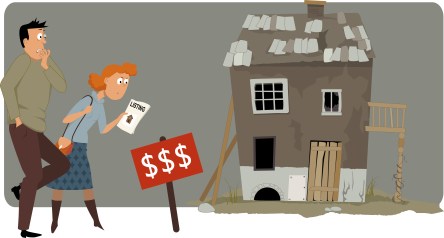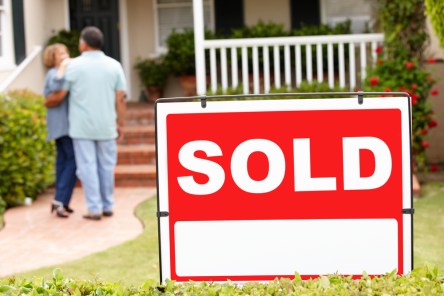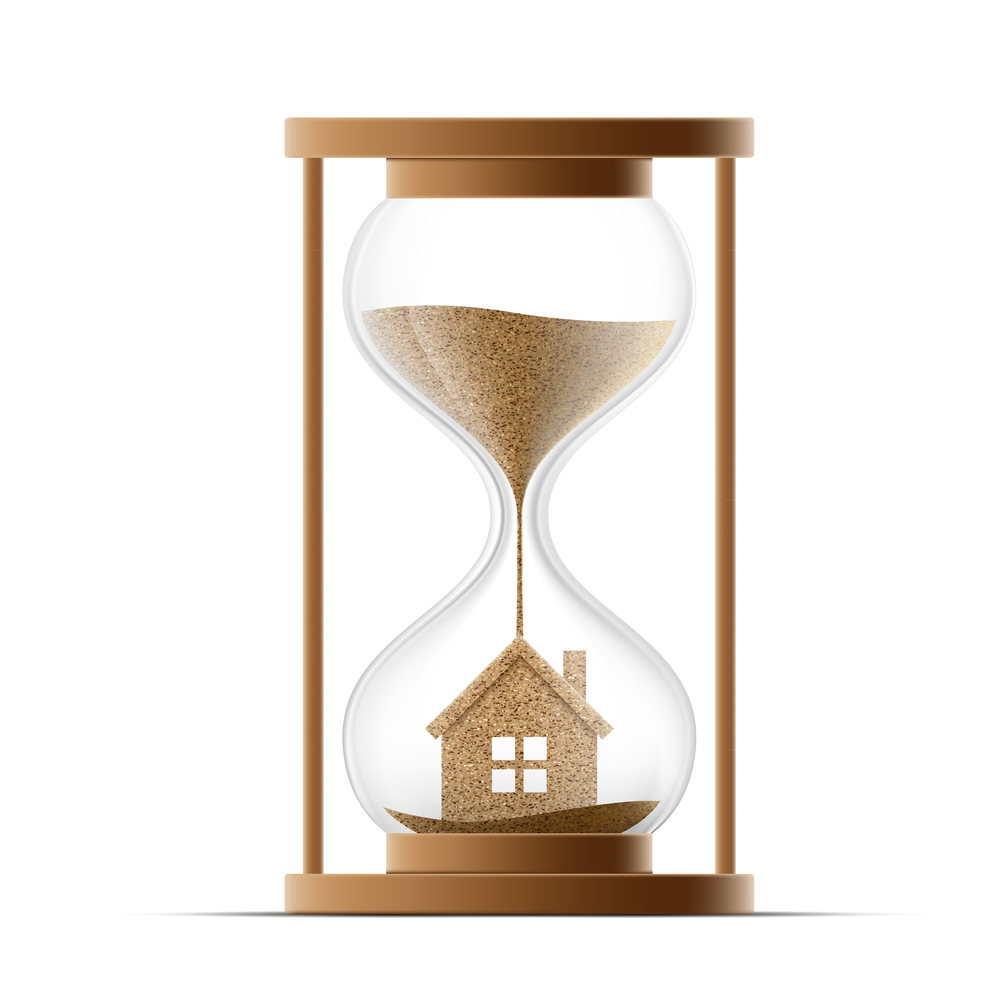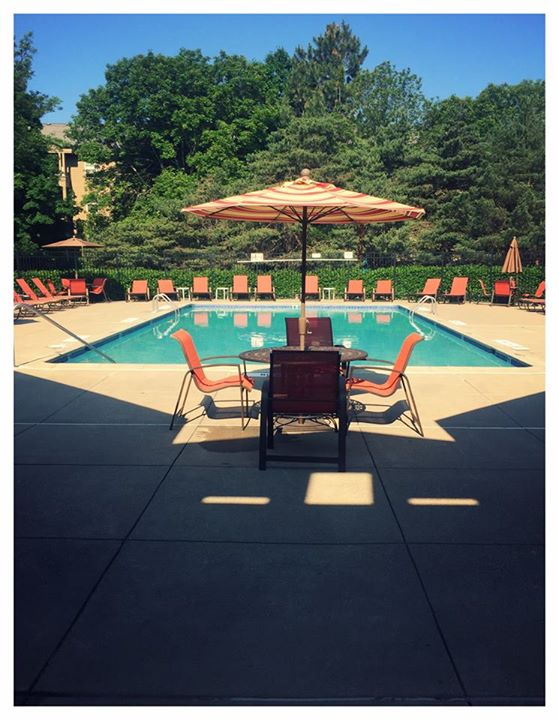Senior housing facilities around the globe are opening their doors to students. The creative solution cuts housing costs for young adults while providing nourishing services for the elderly. Such programs are gaining popularity in the United States. The unlikely pairing comes with an impressive array of benefits for seniors. A study published by the National Institute on Aging (NIA) reveals that changes in social behaviors can prevent or decrease Alzheimer’s disease and other forms of cognitive decline. Seniors can enjoy these improvements without the use of medications or supplements. NIA also reports that intergenerational living can help seniors lower their blood pressure and fend off corresponding illnesses. Researchers cite a strong correlation between loneliness and elevated systolic blood pressure. The same report acknowledges that intergenerational social activities minimize age-related disorders such as rheumatoid arthritis, osteoporosis, and even some forms of cancer. Students also benefit from their involvement in senior care. Many of the programs offer free or discounted rents that reduce student loan debt. In the US alone, student debt exceeds $1.3 trillion according to Forbes. The partnership also contributes to a stronger workforce: young adults can focus on their education, productive internships, and innovative projects instead of working multiple minimum wage jobs to pay rent. One of the earliest intergenerational living programs started in the Netherlands. Humanitas in Deventer hosted five students rent-free in exchange for 30 hours of “good neighbor” service. Activities can include spending time with their elderly neighbors, watching sports and movies together, shopping, and celebrating special occasions. Students also supplement the efforts of professional caregivers when seniors fall ill: Humanitas head Gea Sijpkes reports that companionship during illness minimizes feelings of disconnectedness. It can be challenging when residents’ only interaction comes from caregivers who remind them of their failing...
Affordability Crisis
Toolkit for Development
While the ghosts of the last decade’s housing crisis have (mostly) been put to rest, for many families priced out of their local markets the need for affordable housing remains strong. Like the PC’s infamous “blue screen of death,” the Urban Institute’s map of affordable housing inventory is terrifying to behold. A handful of dark blue swatches in Midwest represent healthy levels of affordable housing inventory. The rest of the country, on the other hand, sits awash in the lightest indigo hues. From barely perceptible azure to the palest cerulean, a majority of states contain less than 50 units per 100 extremely low-income households. More than a third sit at, or close, to zero. As demand for budget-friendly rentals continues to rise, many communities struggle to provide adequate supply. In response to this affordable housing crisis, the White House recently released the Housing Development Toolkit. Part call to action, part policy overhaul, the toolkit’s main purpose it to help cities increase their affordable housing inventory. “The growing severity of unsupplied housing markets is jeopardizing housing affordability for working families,” write the toolkit’s authors, “increasing income inequality by reducing less-skilled workers’ access to high-wage labor markets, and stifling GDP growth by driving labor migration away from the most productive regions,” Accumulated Barriers While New York City’s real estate market is the stuff of legend, until recently most cities were able to supply adequate housing to residents. Unfortunately, several factors have conspired over the last few years to shrink stock and ramp up costs. These “accumulated barriers” are identified by the toolkit as lack of adequate construction, high job growth in areas with low vacancy rates, gentrification, and cost-per-unit increases paired with insufficient public assistance. “The accumulation of these barriers has reduced the ability of many housing markets to...
Next-Gen Employees
Millennial Employment
The senior living industry needs 1.2 million new employees by 2025 in order to meet demand, and that means finding new ways to connect with job-hunting millennials. That “silver tsunami” set to transform the senior living industry will not only change the way providers reach out to residents and provide care, it will also impact staffing and employment outreach. A recent study conducted by Argentum indicates that the senior living industry will have to increase staff by 1.2 million within the next ten years. While some of these new hires will be professionals already working in the industry, a significant portion of potential prospects will be millennials. So how can a senior living provider successfully connect with these young, tech-savvy job seekers? The answer lies in leveraging the latest technology to cultivate a ubiquitous web presence based on partnerships, networking, and a clear articulation of the non-income benefits of committing to a career in senior living. The College Connection According to a recent Senior Housing News report, most college grads conduct their career search through a university program. As a result, the report urges senior living providers to nurture affiliations with local colleges to heighten awareness of career potential within the senior living industry. “We’re facing some real leadership challenges,” Kevin Heffner, director of external relations at the University of Maryland in Baltimore County (UMBC)/ Erickson School, told Senior Housing News. “Some of the titans of the industry are retiring. We’re doing the best we can to develop leaders to fill that void. Providing the opportunity for continued education, in the form of a master’s program or internal certification program, would also make a potential employer stand out from the pack. Not only will these incentives lure ambitious recruits, it also provides potential employees with...
No Parking
Urban Transportation and Housing
Though parking lots are a necessary evil for many cities, surrendering space to automobiles places an undue burden on housing and urban development. On boulevards and avenues across the country, cars circle in an endless cycle, seeking the perfect parking spot and clogging city streets with noise, pollution and traffic. All the while, the space set aside for automobiles wreaks havoc on urban housing. In many cities, developers must provide adequate off-street parking options for any new construction, which ultimately undermines affordable housing initiatives. But what if there was a better way? Last month, the White House released its Housing Development Toolkit. A summary of suggested policy adjustments, the toolkit includes a number of suggestions aimed at helping cities increase affordable housing inventory. The toolkit’s recommendations cover tax adjustments, changes to local zoning laws, and the reduction or elimination of off-street parking requirements. “Parking requirements generally impose an undue burden on housing development, particularly for transit-oriented or affordable housing,” states the report. “By reducing parking and designing more connected, walkable developments, cities can reduce pollution, traffic congestion and improve economic development.” Killing the Commute In the 50s and 60s, the mass exodus to the suburbs was seen as a sign of progress. As incomes rose, families ditched apartment living for open spaces, big backyards, and longer commutes. Over the years, the distance between work and home has grown. These days, many Americans spend several hours a day locked in their vehicles traveling to and from the office. While once economic success once spurred urban flight, high rents and few options are behind today’s workforce relocation. With inflation rising and salaries stagnant, many workers find themselves priced out of their neighborhoods. Ironically, it’s often regulations on parking and transportation that end up adversely affecting affordable housing stock. As the toolkit explains, “These requirements have a disproportionate impact on housing for low-income households because these families tend to own fewer vehicles but are nonetheless burdened by the extra costs of parking’s inclusion in the development.” Low Rents and Bigger Inventories As the toolkit points out, many cities, including Denver, New York, and Minneapolis have already experienced positive results after reducing or eliminating minimum parking regulations. In Seattle, decreasing minimal parking requirements in the city center resulted in “a wave of new development, including hundreds of units with now associated parking spaces.” Even more, eye-opening, a study on Seattle’s decision corroborated the connection between minimum parking requirements and housing costs. In fact, not only did the requirements reduce the number of total units available, they often triggered 50% higher rents. No More Wasted Space With vacancies at a premium, it makes little sense to set aside large swaths of vacant property for the storage of cars often used just a few hours a day. In addition, vehicles in motion are equally nefarious. A study by UCLA urban planner Donald Shoup estimated vehicles cruising around a 15-block stretch of Los Angeles released 730 tons of carbon dioxide annually while also gulping down 47,000 gallons of gas. Apply those numbers nationally, and you can see why it makes good environmental and economic sense to not only move cars off the road but also eliminate the total number of private automobiles in urban environments. There will always be the stubborn holdouts who will cling to their steering wheels with steely determination. For most city dwellers, though, a functioning – and functional – public transportation infrastructure can make car ownership obsolete. Fewer cars ultimately mean fewer parking spots, freeing up all that square footage for housing, including affordable developments. In other words, for proponents of affordable housing, reducing or eliminating parking requirements is a win-win. “Minimum parking requirements [are] the most noted barrier to housing development,” states the Toolkit. “By reducing parking and designing more connected, walkable developments, cities can reduce pollution, traffic congestion and improve economic...
Digital Fluency
Closing Tech's Gender Gap
The world is facing a worker shortage. For the last few years, the World Economic Forum and others have been sounding the alarm on what they call “skills instability,” and many industries are scrambling to find qualified applicants. With women currently making up less than half of the global workforce, tapping into the gender gap could be the solution for the tech industry’s talent shortages. The best way to close the gap? Digital fluency. A new study by Accenture reinforces this idea, declaring, “Because women are underrepresented in the workforce in most countries, they are a significant source of untapped talent.” Digital Fluency Accenture’s study makes it clear that increased access to learning and using digital media results in a smaller gender gap, in both opportunity and advancement. “Our analysis highlights the importance of digital fluency in helping countries progress toward equality in the workplace,” explain the report’s authors. “Higher rates of digital fluency among women have higher rates of gender equality in the workplace.” Defining the Gap Accenture surveyed almost 5,000 women and men in 31 countries to measure their access to digital technologies, including smartphones, wearables, and other devices. Information gleaned from those surveys was cross-checked with data on internet usage gathered from the International Telecommunication Union (the United Nations agency for information and communication technologies). Accenture researchers also looked at three specific areas when creating their template for gender equality. They investigated how women use education in preparation of finding work, how they go about actually looking for a job, and how they advance in their careers. This information was then compared with data from the World Bank and the OECD. The numbers revealed ample evidence that digital fluency can “act as an accelerant in every stage of a person’s career.”...
Millennial Renters
6 Ways to Attract Them
“The Millennials are coming, the Millennials are coming!” We’ve all heard some version of this over the last few years, but now they’re here and ready to rent. Are your properties positioned to get their attention? Here are six simple ways to attract more Millennials to your vacant properties. Learn how you can help them find, like, and trust you, so they will take the next step to becoming residents. Be found on mobile. According to Google, more searches now take place on mobile devices than on computers, and 87% of Millennials always have their smartphones handy – day or night. That means if you want today’s young renters to move in, they need to be able to find you when they’re searching on their phones. Is your property website optimized for viewing on mobile devices? If not, you’re missing out on valuable prospects and possibly not even ranking in search engines at all. Display accurate information instantly. Don’t waste anyone’s time by making your unit availability or prices hard to find. Millennials may be online often, but they’re in a huge hurry! Google tells us that while mobile sessions are increasing, time spent per site visit has decreased 18% in the last year alone. If searchers can’t quickly find the answers they need about your property, they’ll move on, rather than spend more time digging for information. Save yourself extra hassle (and data entry hours) by using online property management software that automatically and accurately updates your internet listings for you on multiple ILS sites. Use great photos. Don’t use outdated or blurry photos on your website, and definitely avoid stock photography whenever possible. Millennials are photo-savvy, thanks to their smartphones and photo-sharing sites like Instagram and Snapchat. They expect to see authentic...
Active Aging Tech
Senior fueled boom
According to the Consumer Technology Association, technology for the active aging presents a $24 billion market opportunity that could reach $42 billion by 2020. Most Americans over 40 probably remember the old Life Alert commercials featuring a kindly grandmother who suddenly – and quite dramatically – falls to the ground, writhing in pain. Unable to reach the phone, she uses her life alert necklace to call for help. Her line, “I’ve fallen, and I can’t get up!”, became a key catchphrase of the 1980s. In the past, equipping senior citizens with wearable emergency devices provided a sense of safety and security. But while those old ads featured frail adults prone to all manner of calamity, today’s senior citizen are healthier, more active, and increasingly tech savvy. Over the last decade, older adults and their families rely more and more on technology to stay connected and improve quality of life. As the authors of the March 2016 Consumer Technology Association (CTA) Report on Active Aging explain, “The world is aging, and so is America. Beneath the seismic shift in the U.S.’s demographics lies the aging population’s desire to live healthier and happier, stay active and independent, and pursue longevity and quality of life.” The New Retiree The modern senior citizen pursues an active lifestyle with time devoted to physical activity and social and community participation. There is also collective rejection of traditional assisted living within this demographic. As Health Populi explains in their analysis of the CTA report, these new senior citizens are committed to a “resiliently stubborn wish to age comfortably at home.” “This population rejects passive aging,” states the report. For today’s older adults, retirement goal revolve less around leisurely days of rest and relaxation and more on “a proactive way of living that...
Housing Options
Care, Cost, Choice for Seniors
With home prices rising faster than the cost of senior housing, many older adults could be ready to make the change from homeowner to senior living resident. For Americans facing retirement age, it can be difficult to determine when to trade in the private home for a senior living residence. While some seniors fear losing a certain amount of independence or surrendering to age and infirmity, others may be primarily concerned with finances. Data provided by A Place for Mom reveals many budget-minded retirees could be better off selling the family home and moving into a senior housing. A Place for Mom collected the data as part of its Senior Living Cost Index. By comparing expenditures on actual rent and care at over 2000 U.S. locations, the index delivers a database for consumers looking to quantify the pros and cons of retirement living. For Charlie Severn, vice president of brand marketing at A Place for Mom, the index stands out from other databases because it includes the actual rent and senior care payments, instead of the typical cost-of-care estimate, making it a “first of its kind.” According to the Index, which includes data from over 100,000 move-ins from 2012-2015, there has been 2.7% rise in all types of senior care in the last year. This increase is 1.5 times faster than core inflation, but still slower than the 7% rise in home prices. As a result, Severn explains, selling the family home may mitigate much of the outlay of moving into senior housing. “This makes the sale of a home from a timing standpoint pretty good,” he tells Senior Housing News. In the end, A Place for Mom hopes the National Senior Living Index can provide helpful information on senior housing options. The Index lists...
Independence Cart
Creative Senior Living Concept
Many senior citizens living in assisted care facilities depend upon family, friends and staff to meet their needs. Due to issues with mobility and limited transportation options, seniors often find themselves unable to purchase the personal products they crave, from face cream to potato chips. For many older adults, this loss of independence and control can be frustrating and dispiriting. Dr. Eleanor Feldman Barbera came up with a simple solution – the Independence Cart. A “store on wheels,” the Independence Cart includes basic supplies – from stationary to snacks – available for purchase. The cart not only provides residents with a chance to make simple purchases, it frees up time for staff and family members often burdened with fulfilling these requests. Though some facilities have experimented with candy carts in the past – often to disastrous dietary results – Dr. Barbera champions the idea. “I believe this concept, taken in the right direction, could be successful in every way.” At one senior living property located in the middle-class borough of Queens, the Independence Cart delivers more than greeting cards and candy bars; it provides the chance to exert some self-sufficiency. At the helm of this mobile shopping mall is 96-year-old Trudy Schwartz (pictured). Though small in stature, and older than some of her customers, Trudy feels energized by the hours she spends volunteering at the center. “I’ve been so fortunate all my life that I really feel I have to do something to give back,” Trudy admits in an interview with Dr. Barbera about the cart. “I have lovely children and grandchildren and good health. Sure, I’ve had troubles, but for the most part, I’ve been very fortunate.” Trudy took over the cart from another volunteer after spending time at the center visiting her...
Similar Challenges
Seniors, students & housing
When it comes to new construction, students are finding themselves in a dilemma similar to renters twice their age. A shortage of affordable and middle-market properties has students and seniors struggling to pay for shelter. Senior Care In senior housing, Boomers face limited affordable and middle-income options for their aging loved ones or themselves. New construction caters largely to high-end buyers. Location is a major factor: seniors’ most desired areas include sites with easy access to public transportation, activities, and proximity to family. These centralized locations come with high land costs. In the end, those costs and the costs of fluctuating building materials roll over to the seniors and their caretakers. Vorice Ratchford served as her mother’s caregiver for nearly a decade. She often checked for housing near her home in a southeastern suburb of Atlanta, but could never find accommodations within her price range. “Even when she was healthier, we couldn’t find housing that we could afford,” recalls Ratchford. “As her health declined—she had dementia—it became even harder.” The Alzheimer’s Association reports that housing costs range from $43,200 per year for basic services to $91,250 per year for a private room in a nursing home. In a single-earner household, taking on additional debt to pay for senior housing wasn’t an option. According to the 2013 Survey of Consumer Finances, the average American household has $15,054.54 in credit card debt, excluding mortgages and auto loans. Ratchford, like many Americans, has been struggling toward debt freedom. Ratchford became a full-time caregiver for her mother, putting three adults on the support of a single income. “I can’t imagine how someone with a full-time job could be a caregiver for someone with dementia,” Ratchford says. “Even with my previous job, every cent of my income would need...
Tech-Savvy Seniors
Supporting longevity
While the benefits of introducing computers and other digital devices to seniors seems clear, it can be difficult for senior living facilities to convince residents to take that leap. Could computers be the next fountain of youth? Studies have shown seniors exposed to modern technology demonstrate less cognitive decline overall compared to their less computer-savvy counterparts. Thankfully, there’s a whole slew of apps and programs designed to make it easier than ever for even the most gadget-phobic user to navigate the online world like a pro. In Like Flynn Data collected on intelligence quotients over the last 80 years indicate a clear upswing. Called the Flynn effect, this sustained upsurge of IQ scores can mostly be traced to improvements in education, nutrition and healthcare, but a recent study from the International Institute for Applied Systems Analysis reveals another surprising possibility: smart phones and tablets Published in the journal Intelligence, the study – lead by Valeria Bordone – tested two different groups of seniors over 50: one group in 2006 and the second group in 2012. When comparing the results, Bordone’s team saw a marked improvement in cognitive function. The second group performed better on a series of tests, demonstrating superior abilities in verbal fluency and recall. While not definitive, Bordone and her team attribute this result to increased access to mobile devices and other technologies. “We show for the first time that although compositional changes of the older population in terms of education partly explain the Flynn effect, the increasing use of modern technology (i.e., computers and mobile phones) in the first decade of the 2000s also contributes to its explanation,” concludes the report. Diving Into Digital A 2015 report clearly shows a rise in technological knowledge amongst adults over 50. For example, in...
Bridging Generations
Senior and Millennial Housing
A camera pans across the room, revealing the usual suspects – senior residents grouped around small tables, some in wheelchairs, creating a typical scene playing out in senior living facilities across the world. And then, the unexpected…a young man enters, sitting down to share cakes and conversation. At that moment, it becomes clear – this is not your typical “old folks home.” Finland, like many industrialized nations throughout the world, is facing a severe housing problem. According to estimates, in Helsinki 90,000 renters are competing for approximately 60,000 units. This gap in availability has resulted in a brutal housing market, severely affecting young adults trying to move out and live independently. Ranked as the 16th most expensive city in the world, Helsinki is facing rapid population growth and ever-rising housing costs – leaving the city’s youth vulnerable to homelessness. “It’s a very expensive city to live in,” 23-year-old kindergarten teacher Emil Bostrom recently explained to CNN. “If you manage to get an apartment that the city owns, it can be quite affordable. But the amount of applicants for those apartments is so high that the waiting list takes forever.” “Youth homelessness is the sum of many parts, and there is no simple solution,” Finnish Youth Housing Association Secretary General Minna Vierikko declares. “It is essential that different actors join their forces and start seeking alternative models to solve the problem of youth homelessness. For Miki Mielonen, Homes That Fit provides a simple solution. Homes That Fit invites Finnish millennials to cohabitate with Helsinki senior citizens as part of a pilot program run by City of Helsinki’s Youth Department, Design Driven City, the non-profit rental housing company Alkuasunnot, and the national youth housing association Nuorisoasuntoliitto. In exchange for socializing with elderly residents, 25 eligible participants...
Myth Busting
MultiGen Workspaces
Yardi client Avison Young recently released “Five generations: Is the need for new workplace structures myth or reality?” The white paper explores the perceived need to overhaul workplace layouts in order to accommodate multi-generational employees. Generations have replaced one another in the workplace since, well, the dawn of the workplace. Yet the introduction of Millennials has employers grasping for new ways to catch and keep the newcomers’ attention without isolating older employees. According to the U.S. Census Bureau, Millennials are the largest generation. Ever. There are currently 83.1 million young adults in the U.S. alone, representing more than one quarter of the nation’s population. The group is a dominate force to be reckoned with. Employers are still learning how to reckon. The first challenge: Millennials are hard to keep on board. The report suggest that Millennial attrition costs are nearly twice that of older workers, “For an organization of 1,000 employees, the additional cost of replacing Millennials could average as much as $300,000 annually.” Stereotypes would suggest that this is because Millennials lack loyalty. Any new carrot could whisk them away to another company. The report reveals the error of this assumption. Jennifer Deal, research scientist with the Center for Creative Leadership, discovered level within the company correlates to loyalty rather than age. The next assumption is that the workplace itself is wrong for Millennials, hence the tendency for employers to create “hip” spaces that should feel more welcoming to Millennials. Organizations are creating lines in the budget for arcades, cafes, sleeping pods, slides,—the list continues. This, too, is a potentially erroneous strategy. How does one measure the ROI of a hoverboard? “Our research shows that when you hold the stereotypes up to the light, they don’t cast much of a shadow,” explains Deal....
StratIS
Tech for Student Housing
Tech and college students go hand-in-hand. That hasn’t always been the case for tech and student housing. This sector of multifamily housing has experienced a lag in affordable products that bring energy management and automation into the modern technological environment. StratIS is quickly changing that. BuLogics, a campus leaders in wireless solutions for the Internet of Things, developed StratIS in 2013. StratIS facilitates varying degrees of remote control for energy usage, home automation, and access to residential units. Users can also submit maintenance requests using the app. For unit access, StratIS partnered with Schlage hardware company to create Control Smart Locs with ENGAGE. This technology is ideal for multifamily applications: ENGAGE permits lock control through the cloud-based StratIS app. Through this network, staff can now remotely issue replacement credentials, grant vendor access, and complete audits without entering into the field. StratIS operates in more than 72,000 multifamily and hospitality units in nearly 300 properties throughout the U.S. Student housing units make up approximately one third of StratIS properties. The system has quickly grown popular with student housing owners and managers thanks to three key components: Low Costs Popular energy and access management systems of this type are often cost prohibitive for the owners of smaller buildings. The relatively low cost of StratIS technology opens the arena of advanced management tools to owners of properties with smaller footprints. Quick Returns StratIS claims a two-year return on investment for its wireless solutions. The company also reports a 20 percent reduction in energy consumption before demand response capabilities. Easy Installation StratIS offers ultra-simple product installation. CEO Felicite Moorman told Building Design + Construction, “I also test everything on my seven-year-old, and if she can’t use it, we try to figure out what happened.” The company’s innovative approach...
Keep Connected
National Assisted Living Week 2016
With its 2016 theme, Keep Connected, the National Center for Assisted Living hopes to shine a sotlight how technology can enhance the lives of senior citizens. According to a 2014 Pew report, almost 3/4th of American seniors own a cell phone, and more than half are online. In fact, though older adults are typically late adopters, Pew discovered that once seniors join the online world, “digital technology often becomes an integral part of their daily lives.” In recognition of the effect technology can have on the lives of older citizens, the National Center for Assisted Living (NCAL) announced the theme for National Assisted Living Week 2016 will be “Keep Connected.” Organizers hope the event, taking place September 11-17, will highlight how technology can improve the senior experience. “With this year’s theme, we hope to help overcome the mistaken belief that seniors are not interested in or able to learn about the latest modern advancements,” explains NCAL Executive Director Scott Tittle. “At the same time, we want to recognize the many revolutionary ways staff are enhancing care through new innovative tools and broadening their connections with the larger community.” For older adults transitioning into senior living, the physical distance from friends and family can be daunting. The disappearance of day-to-day contact with loved ones can leave retirees feeling isolated and alone, but that doesn’t have to be the norm. As programs like Sienna Senior Living’s Cyber Seniors prove, with a little coaching seniors can learn to use the latest apps and devices without difficulty. Laptops, phones and tablets empower older adults, helping to strengthen personal relationships and connect with us with the outside world. For senior living businesses using the Yardi Senior Living Suite™, the value of a connected community is evident. From the beginning,...
Active Retirement
Best U.S. Cities
With its mild weather and low-cost housing, Florida has held the crown for top retirement destination for decades. However, what once intrigued and lured senior citizens to Gulf Coast condominiums and South Beach high rises no longer carries sway. A new era of retirees are changing the notion of “ideal retirement location.” The king has been deposed, and though Pompano Beach and West Palm Beach still maintains some allure, the top spots now include more than a few unlikely candidates. A Different Kind of Retiree SmartAsset recently set out to discover what U.S. cities were best for active retirement. What they found was a shift away from quiet, sedentary twilight years. Instead, today’s seniors want stronger community connections, friendly tax policies, and all the amenities associated with an active lifestyle. With boomers poised to dominate all facets of senior living over the next several decades, the cliché of aimless retirees splitting time between golf and bingo has changed. As a reflection of this shift, SmartAsset chose to study the nation’s top cities based on this new set of metrics. What they found upends some of the most basic assumptions about what makes a perfect golden years retreat. The Active Lifestyle SmartAsset considered four metrics for their study: average effective tax rate, the number of doctors per 1000 residents, the number of retirement centers per 1000 inhabitants, and percentage of population made up by senior citizens. When assessing a city’s active lifestyle compatibility, SmartAsset determined the area’s Walk Score, which measures pedestrian navigability, safety and convenience. They also took into account the number of golf courses per 100,000 residents (some standards still apply!). Another key data point measured the number of other fitness-related businesses, like gyms, recreations centers and sporting goods stores, in the area. Once...
Homeownership
Do salaries stack up?
Finder.com recently gathered data on 78 cities throughout the US. The figures were used to determine the salaries needed to buy a home and live comfortably within these cities. The average wage in the US–$52,250 according to the US Census Bureau—sustains homeownership in only 46 percent of the listed cities. Realistically, the numbers are even more conservative than the data would suggest. Of the cities examined, the top ten cities on the list that required the highest salaries would not surprise anyone. California cities occupy nearly half of the top ten. San Francisco led the pack, suggesting a salary of at least $180,600 for the average home priced at a cool $1,119,500. San Jose and Los Angeles came in second and third, respectively. A resident earning $129, 864 could afford the average home in San Jose while $90,244 is needed in Los Angeles. My beloved Atlanta comes in at 45 on the list. The average home, priced at $180,000, requires a salary of about $51,551. Jackson, MS, wraps up the list. Residents earning $43,265 can ideally afford to buy a home and live comfortably. In defining what it means to live comfortably and buy a home, the site made several assumptions that simply don’t resonate with many Americans. We will take the Atlanta market, for example. For buyers seeking a home in the $180,000s, the assumption that the homebuyer has the ability to pay off annual non-mortgage related household debt and has saved up $36,000 as a down payment is unrealistic. Manuel Cabrera, Branch Manager with CalAtlantic mortgage, shakes his head upon hearing the assumptions. “Primarily, the median home price within the Atlanta metropolitan may be $180,000 but that doesn’t mean it’s a realistic price for buying a home. There are still foreclosures and...
Global Aging
Senior Living Around the World
In the U.S., the impending wave of aging baby boomers has sparked a cultural shift in senior living industry, inspiring thousands of new projects and products. But what about the rest of the world? According to United Nations Population Fund (UNFPA) report Aging in the 21st Century, “the population of people over 60 will reach 1 billion within the decade.” Even more eye-popping, 80% of the world’s seniors will live in developing countries. As the UNFPA explains, “While the trend of aging societies is a cause for celebration, it also presents huge challenges as it requires completely new approaches to health care, retirement, living arrangements and intergenerational relations.” “People everywhere must age with dignity and security.” Exporting Strategies Stateside, senior living providers have already begun to plan for the impact of millions of seniors by offering new alternatives and greater options in an effort to woo future residents. However, even more tantalizing than the millions of U.S. senior citizens poised to enter retirement are the hundreds of millions of Chinese and Indian citizens who will soon turn 65. As Forbes contributor Benjamin Shobert points out in a recent piece for the New York Times, U.S. senior living providers are perfectly positioned to capitalize on the rise of the international senior population. “With the realization that we are all living longer in mind, now is the time for American and European senior living companies to begin laying the groundwork for the globalization of senior living.” Looking East For Shobert, China and India top the list of potential markets ripe for western-style senior living offerings. By 2050, the number of Chinese citizens over 65 years in age will number well above the entire U.S. population. In consideration of this expected demographic explosion, U.S. senior care companies...
Boycotting Bingo
Senior Gaming Gains Ground
From pinball to Pac-Man, arcade games and their video counterparts tend to be relegated to the children’s table – derided as juvenile entertainments that sap brainpower and encourage antisocial behavior. Lately, though, that perspective has shifted as more and more studies reveal a host of social and mental benefits associated with game play, especially for those 65 years and older. While a lot of study has gone into the effects of video games on children and young adults, in the past few years attention has shifted to how video game play can affect perceptual and cognitive abilities in older adults – specifically senior citizens aged 65 and older. Because age can influence an individual’s ability to participate in physical activities, many see video games as a perfect addition to senior living healthcare protocols. For many seniors facing mobility challenges, the interactive feature of online video games can with the isolation and deteriorating brain function so many elderly adults face as they age. With a plethora of options – from immersive adventure games to puzzle-solving offerings – video games can help enhance cognitive function and increase social interaction by allowing players to connect with other users through the game’s online community. A variety of studies has attempted to establish a connection between video game play and cognitive function. While many researchers have reported significantly improved mental functionality, including improved memory and analytical reasoning older adults as the result of playing a video game, the connection between video game play and increased cognitive function can be tenuous. A Frontiers in Psychology report from 2013 concluded, “video game interventions may hold promise in terms of addressing declines associated with cognitive aging, but there are still many unknowns.” Follow-up tests found that the seniors who played the strategy...
Renting to Millennials...
What You Know is Wrong
You know all of those reports on Millennials and their love for tiny, urban spaces in walkable communities? They might be wrong. It turns out that Millennials value space and authenticity more than we previously believed—and the two rarely go hand-in-hand. A recent study suggests that while Millennials do enjoy their apartments in urban environments, they’re willing to leave rentals behind for more spacious accommodations. The BUILDER Responsive Home project reveals that young adults enjoy the amenities that urban living provides, but they crave more space. Of the participants surveyed, 83 percent said more space is the biggest motivator to purchase a home. Unfortunately, 61 percent admit that they cannot afford a home. The report suggests something that many have suspected for a while: Millennials want it all while paying next to nothing. They want airy homes in walkable neighborhoods. Easy access to recreation, shops, and restaurants should not interfere with nearby sprawling green spaces, trails and outdoor activities. When competing for the 61 percent of renters who cannot afford a home, one of the biggest challenges for multifamily firms is to figure out how to offer the most spacious living, in walkable areas, that Millennials can afford. Business Insider reports that the average median income for male Millennials is $35,000 per year and $31,069 for females. This generation doesn’t have tons of cash tucked away, either. A survey conducted by the Federal Reserve Survey of Consumer Finances indicates that the average Millennial has a net worth of $10,400. Since most Millennials do spend less than 30 percent of their annual income on housing, they don’t have much to spend on housing relative to the tall orders that they’re placing. Simply telling the Millennials, “tough luck,” won’t cut it. Some multifamily builders have chosen...
Student Services
6 Smart Housing Tips
We are seeing dozens of headlines each month that herald the arrival of another luxury student housing community. These ultra-posh accommodations can cast a rather unglamorous shadow on nearby aging properties with fewer resources. If you find yourself in the shadow of the shiny new community down the street, don’t fret. Instead, use that energy to implement creative solutions for attracting student renters. While you might not have the newest property on the block, there is still a pool of quality renters who are in need of your services. Identifying, developing, and marketing those services will be your keys to success. Value Many students are priced out of newly constructed housing, which will send them your way as an alternative. It’s up to you to shine brighter than other listings in their price bracket. Instead of free rent and waiving fees, aim for investments that provide long-term convenience and value. Bundling trash services and utilities with the rent creates a quick, easy payment setup that young adults appreciate. Including appliances with the unit (especially a washer and dryer) is a quick way to add value and convenience for cash-strapped youth. Location Proximity to campus is priceless for students, allowing them to save money on transportation costs and save time. Be sure that your digital presence, print materials, and social media “about” sections include your proximity to local campuses. In high traffic places in the building, post transit schedules and a map of local stops. Responsive Staff Young renters expect online resident services: online leasing, online bill pay, and online maintenance requests are just a few of the conveniences that you can offer to tech-savvy youth. Going digital will allow your team to process applications quickly and efficiently. Conveniently, online services will also free up your...
Silver Tsunami
Housing America’s seniors
America is in the midst of an unprecedented growth of the senior population. By 2030 there will be approximately 132 million individuals over the age of 50, the Joint Center for Housing Studies of Harvard University (JCHS) predicts. At the same time, one in five Americans will be 65 and over, with the 65-74 age group reaching 38.6 million, nearly double of what their numbers were in 2010. By 2040 every eighth American will be over the age of 75, while currently only one in sixteen is. All in all, in less than 20 years the 50+ generation will increase by 23 million. While there’s still time to plan for this unprecedented growth, communities, developers and policy makers need to implement long-term plans to safely and equitably accommodate America’s silver Boomers. The Silver Tsunami The silver tsunami, as some have dubbed the influx of aging Baby Boomers, started showing its force in the mid-nineties, when the oldest Baby Boomers hit 50. Between 1990 and 2010, the pre-retirement age bracket (50 to 64 years old) swelled from 32.5 million to 58.8 million. With the oldest Boomers steadily crossing 65 now, that growth will feed into the senior demographic, causing an unprecedented growth. Family makeup impacts senior housing needs. 47 percent of householders under the age of 50 have at least one child living in the home. For those over 50, that number drops to nine percent. The number of people living alone also increases steadily after 50. By age 80, three out of five households consist of a single person, and 75 percent of those are women. This in many cases leaves seniors and pre-retirees in oversized homes, which can be costly to maintain. Pre-retirees and seniors looking to downsize and/or move into some form of senior housing were hit especially hard during the economic downturn, as their home equity was locked up in a soft housing market. The recovering single-family market however, paired with a strengthening stock market has a lot of seniors feeling safer about their options, Marcus and Millichap found. Freeing home equity has allowed for more seniors to relocate funds towards senior housing such as continued care retirement communities (CCRC). A more stable economic environment is also allowing younger generations to dedicate funds towards specialized housing for senior parents. As a result, occupancy has grown across all senior housing segments: independent living occupancy is on the rise, and skilled nursing facilities are posting lower vacancies. Growing demand has also pushed up rents. The Affordable Care Act is also expected to help many seniors to access specialized care facilities. Seeking Senior-Friendly Housing As financial security and physical and cognitive abilities decrease with age, affordable, accessible and well-located housing becomes of utmost importance. Although quality of life in old age continues to improve, the increase in life expectancy also means that the number of adults living with some form of disability will also grow, at a time when most of the existing housing stock is ill equipped to cater to these needs. This birthed the universal design movement that aims to make built environments accessible and safe to individuals of all ages and abilities and allow for aging in place. According to JCHS, the five most important features of universal design are no-step entries, single floor living, extra-wide hallways and doors that allow for wheelchair access, switches and outlets reachable at any height and lever-style door and faucet handles. Only 57 percent of the existing housing stock incorporates at least two of these features. Although multifamily units built after 2000 are significantly more accessible than pre-1940 housing, most still lack the universal design quintuplet. For example, only one in five feature lever handles and only one in six has extra wide hallways and doors. Most adults over the age of 50 live in single family homes they own. Only a little over 60 percent of senior renter households...
Homebuying Hopes
First Time Struggles
A seemingly healthy economy, rising rent rates and a limited inventory of existing homes are pushing some buyers into the new homes market. Interestingly, they have few options once they arrive; new home construction is largely targeted towards mid- to high-price tier properties. First-time buyers are in limbo, adding uncertainty to an already imbalanced market. Census Bureau data reports year-over-year prices of new home sales have risen above the May 2014 estimate. Price trends indicate above average emphasis on move-ups and luxury home sales. In May 2014, the average price of homes sold was $323,500. The May 2015, the average sales price came in at $337,000. These aren’t first-time homebuyer prices though the group makes up a noteworthy portion of home buyers returning to the market. In 2014, first-timers made up 27 percent of buyers. This summer, they’re exceeding 32 percent, reports National Association of Realtors. A Campbell/Inside Mortgage Finance HousingPulse suggests an even higher figure with first-timers composing nearly 40% of purchases in May. Most builders overlook this growing group. Inaccurate data—or incomplete data, at best—may be a factor in builders’ strategies. On the surface, home demand is up as are job growth and wages. In theory, first-time home buyers are walking into a market that is accommodating their needs and improving their odds. Except it isn’t. A Pew Research Center report explains, “For most U.S. workers, real wages — that is, after inflation is taken into account — have been flat or even falling for decades, regardless of whether the economy has been adding or subtracting jobs.” The report continues, “But after adjusting for inflation, today’s average hourly wage has just about the same purchasing power as it did in 1979.” The organization’s August 2014 survey concludes that 56 percent of Americans...
Cities Getting Smarter...
Cleaner, Greener, Leaner
The number of people living in urban areas is increasing at a rapid pace. Currently, about 54 percent of the world’s population live in cities and use about two-thirds of the world’s energy and the majority of other resources. By 2025, 34 cities worldwide will have a population of greater than 10 million people, and according to the United Nations, about 6.3 billion people, or 66 percent of the world’s population, will have moved into a city by 2050. The increased urbanization comes with a set of challenges that affect not only the current residents, but also future ones and the planning needs to address how cities can grow to accommodate them, in a sustainable and cost-effective manner. The demand for resources handled by the municipality will reach extreme heights; the demand for water alone is estimated to reach by 2025 80 billion additional metric tons and this is not the only reason of concern: reliable power and energy, air quality, traffic flows – all will impact quality of life. With these in mind, more and more metro areas are getting smarter by using technology. According to a study by IHS Technology, by 2015 the world will have at least 88 smart cities, out of which 25 will be in the United States. The report “Smart Cities: Business Models, Technologies and Existing Projects” defines the ‘smart cities’ as those that have “deployed – or are piloting – the integration of information, communications, and technology (ICT) solutions across three or more functional areas of the city.” Applications include mobile and transport, energy and sustainability, physical infrastructure, governance, and safety and security. Europe and Asia lead the way in implementation of smart cities, however, the U.S. is making efforts to bring smarter and more efficient city infrastructures...
Fit in the City
American Fitness Index results
Ever wondered how fit your city is? The American College of Sport Medicine (ACSM) has. Since 2008 the ACSM takes a look at the health and fitness of the nations’ top 50 metropolitan areas, compiling a comprehensive ranking on community fitness to assess city strengths and identify areas in need of improvement. Dubbed the American Fitness Index (AFI), the report scores cities in a plethora of categories, such as walkability, residents’ proximity to public parks, chronic health problems, dietary preferences, recreational facilities and policy for school P.E. 2015’s recently released AFI report uncovered a number of encouraging results, with nine cities jumping up five spots in the ranks compared to last year. Some, such as Las Vegas, did so thanks to local action taken as a result of prior years’ results. An unsurprising result of the report is California’s love for healthy lifestyles. Of the six California MSAs on the AFI, four ranked in the top ten and none in the bottom fifteen. In fact the top five was dominated by California with Sacramento, San Francisco and San Diego ranking fifth, fourth and third. Minneapolis, the USA’s most bike-friendly city, was named runner-up to the country’s fittest city: Washington, DC. Washington-Arlington-Alexandria, DC –VA-MD-WV Topping the American Fitness Index, the Washington, DC area seems to be doing everything right. The city excels at the number of people walking, biking or using public transport to work, the number of farmers’ markets, park units, dog parks, swimming pools, rec centers and tennis courts and park-related expenditures per capita, with a high percentage of the population being within a 10-minute walk to a park. Washington’s fitness-consciousness is perfectly reflected in the Bozzuto Group-managed Flats 130 at Constitution Square and Flats at Atlas. Built in 2011 and 2013, the...

























